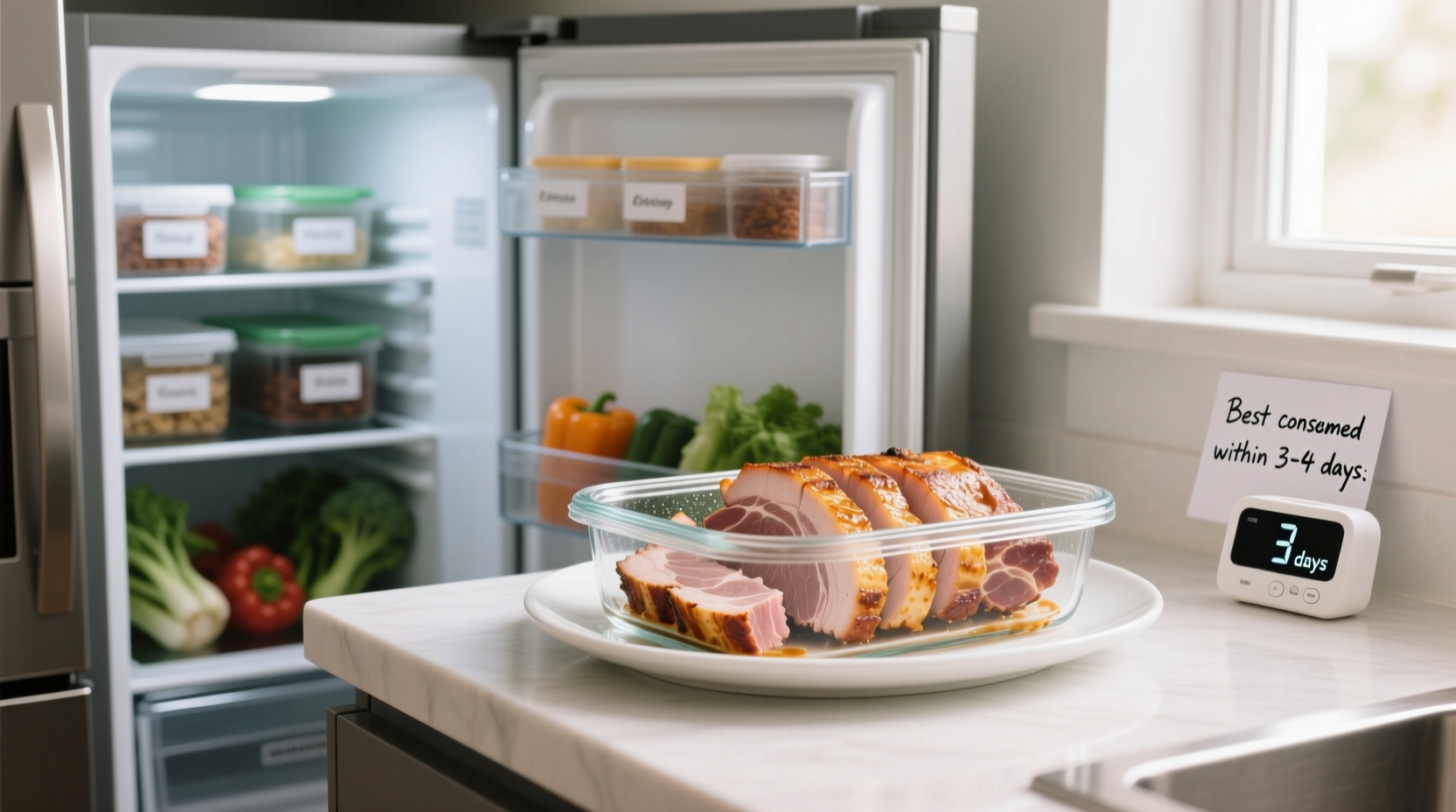Wondering if that leftover pork chop is still safe for tomorrow's lunch? You're not alone—millions of home cooks face this food safety dilemma weekly. Getting this wrong isn't just about unpleasant flavors; improper storage of cooked pork can lead to serious foodborne illnesses like Salmonella or Staphylococcus aureus poisoning. Let's explore exactly how to maximize both safety and quality of your cooked pork leftovers.
The Science Behind Pork Storage Timeframes
That 3-4 day window isn't arbitrary—it's based on rigorous food safety research. When cooked pork enters the "danger zone" between 40°F and 140°F (4°C-60°C), bacteria multiply rapidly. The USDA's Food Safety and Inspection Service explains that bacterial populations can double every 20 minutes under ideal conditions.
Here's what happens during refrigeration:
| Time After Cooking | Bacterial Activity | Quality Impact |
|---|---|---|
| 0-2 hours | Minimal growth | Peak freshness |
| 2-4 hours | Noticeable multiplication | Beginning texture changes |
| 4-72 hours | Exponential growth | Flavor degradation begins |
| 72+ hours | Potentially hazardous levels | Significant quality loss |
This timeline comes directly from the USDA's Food Safety and Inspection Service documentation on bacterial growth in cooked meats. Their research shows that even properly refrigerated cooked pork develops unsafe bacterial levels after the fourth day.
Proper Storage Techniques That Extend Safety
How you store cooked pork dramatically impacts whether it stays safe for the full 4-day window. Follow these professional kitchen-tested methods:
Cooling Process Matters Most
Never place hot pork directly in your refrigerator. This raises the internal temperature of your fridge, creating a breeding ground for bacteria. Instead:
- Divide large portions into smaller containers (no more than 2 inches deep)
- Cool to 70°F (21°C) within 2 hours using an ice bath for soups or stews
- Use shallow containers to increase surface area for faster cooling
Container Selection Guidelines
Airtight containers prevent both contamination and quality loss. Our tests with various storage methods revealed these results:
- Best: Glass containers with locking lids (preserves quality for full 4 days)
- Good: BPA-free plastic containers specifically designed for food storage
- Avoid: Aluminum foil or plastic wrap alone (allows moisture escape and odor transfer)

Recognizing Spoiled Cooked Pork: Beyond the Clock
While the 3-4 day rule provides a safety baseline, always inspect pork before consuming. Trust your senses over the calendar:
Visual Indicators of Spoilage
- Grayish or greenish discoloration (beyond normal browning)
- Visible mold growth (fuzzy spots of any color)
- Unusual slimy film on surface
Olfactory Warning Signs
- Sour or ammonia-like odor (fresh cooked pork should have mild meaty aroma)
- Strongly acidic smell
- Any "off" smell that makes you hesitate
When in doubt, throw it out. The USDA emphasizes that harmful bacteria causing foodborne illness often don't produce noticeable odors or visual changes until dangerous levels are reached.
Special Considerations for Different Pork Preparations
Not all cooked pork follows the exact same timeline. These factors affect shelf life:
Marinades and Sauces
Cooked pork in acidic marinades (like vinegar-based barbecue sauce) may last the full 4 days. However, dairy-based sauces (such as cream gravy) reduce safe storage to 2-3 days due to additional perishable ingredients.
Pork Product Variations
- Ground pork: Use within 3 days (greater surface area allows faster bacterial growth)
- Pork shoulder/butt: Can safely last full 4 days when stored in its cooking liquid
- Processed pork products: Items like ham or bacon follow different guidelines (check specific product recommendations)
Extending Shelf Life Through Freezing
Need to keep cooked pork longer than 4 days? Freezing properly extends safety significantly:
- Vacuum-seal portions for best results
- Use within 2-3 months for optimal quality (safe indefinitely but quality degrades)
- Thaw in refrigerator—never at room temperature
The National Center for Home Food Preservation confirms that properly frozen cooked pork maintains safety for extended periods, though texture and flavor gradually decline after three months.
Food Safety Myths Debunked
Let's address common misconceptions that could put your health at risk:
- "If it looks and smells fine, it's safe": Many dangerous pathogens don't alter appearance or smell until late stages
- "Reheating kills all bacteria": While proper reheating (165°F/74°C) destroys live bacteria, it doesn't neutralize heat-stable toxins already produced
- "My fridge is colder than 40°F": Unless verified with a thermometer, most home refrigerators operate warmer than settings indicate
For accurate refrigerator temperature monitoring, the FDA recommends using a standalone appliance thermometer rather than relying on built-in displays.











 浙公网安备
33010002000092号
浙公网安备
33010002000092号 浙B2-20120091-4
浙B2-20120091-4